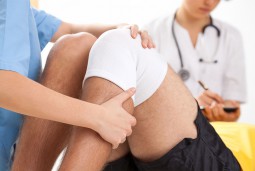There are varying degrees of tendon and ligament injury, each requiring a unique treatment plan and course of action in order to achieve full or near full recovery. Seeking treatment from an experienced orthopedic doctor can ensure the best outcome following a tendon or ligament injury.
Types of Tendon and Ligament Injuries
Both tendons and ligaments may be torn, stretched, inflamed, or weak, all of which produce unique signs and symptoms and affect quality of life differently. The common denominator is that regardless of the type of injury and the type of soft tissue – i.e. tendon or ligament – the injury is typically characterized by pain and decreased mobility.
Causes of Soft Tissue Injuries
Soft tissue injuries are typically the result of strain, friction, or trauma. This can be caused by a number of various injuries or accidents including falls, car accidents, or even repetitive motion related to work or sports. Those at highest risk of tendon and ligament injuries are athletes, and close behind are workers who perform repetitive over-head work, such as painters and mechanics.
Signs and Symptoms of Tendon or Ligament Injury
The most common symptom of tendon or ligament injury is pain. Other symptoms include decreased mobility, stiffness, looseness (such as a feeling of dislocation or potential dislocation), tingling, numbness, referred pain (such as pain or tingling in the fingertips as a result of an injury in the shoulder or forearm). Furthermore, when one tendon or ligament is injured, other muscles must work harder to stabilize joints, which may result in sore muscles, muscle spasms, or tension headaches.
Managing Pain at Home
Muscle spasms, pain, and limited mobility typically require medical treatment in order to address and treat the problem before further damage occurs. However, some steps that can be taken at home to determine whether the issue is long-term and requiring treatment including taking over-the-counter anti-inflammatories on regular schedule for several days (i.e. every four to six hours for four to seven days) to see if pain alleviates and movement improves as well as applying ice for twenty minutes three times daily. Avoiding activity that worsens symptoms is also recommended.
Treatment
A variety of treatment plans may be initiated to treat injured tendons and ligaments, depending on the cause and severity of the injury. In some cases, anti-inflammatories, ice, and rest may be ordered to promote healing and prevent worsening of the condition. In other cases, ligament injection therapy may be recommended to stimulate collagen production and promote healing.
In the case of torn tendons or ligaments, the tension on these structures causes the torn ends to pull away from one another following injury, which means the tear cannot heal without surgical treatment. During surgery, the area is numbed using local anesthetic and then the ends are pulled back together and reconnected. Strict restrictions on physical activity are put in place until healing is complete, and physical therapy is often required. Patients with physical jobs may be required to take four to twelve weeks off of work following surgery.



